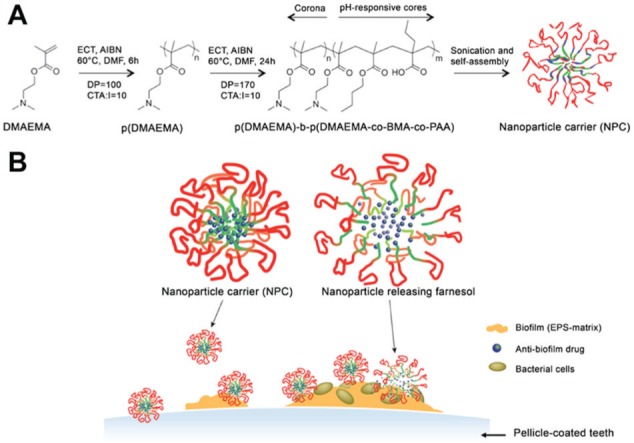Figure 4.

Scheme depicting (A) the self-assembly of p(DMAEMA)-b-p(DMAEMA-co-BMA-co-PAA) diblock copolymers that results in cationic polymeric nanoelements of around 21 nm (each block with ~20 kDa). The polymer conjugation and its subsequent physicochemical features results in nanoelements with antagonist microchemical features: positively charged hydrophilic surface and hydrophobic core, in which hydrophobic antibacterial agent (e.g., farnesol) was incorporated. (B) Assemblies could be formed from the nanoelement affinity to the dental pellicle and exopolysaccharide (EPS) matrix (multisite affinity). Microchemical environment changes toward an acidic pH (found in cariogenic biofilms) trigger rapid farnesol release and bacterial death within biofilms. Adapted from Horev et al. (2015) with the permission of the American Chemical Society. The polymeric nanostructure and biofilm diagrams were designed by Michael Osadciw, University of Rochester.
